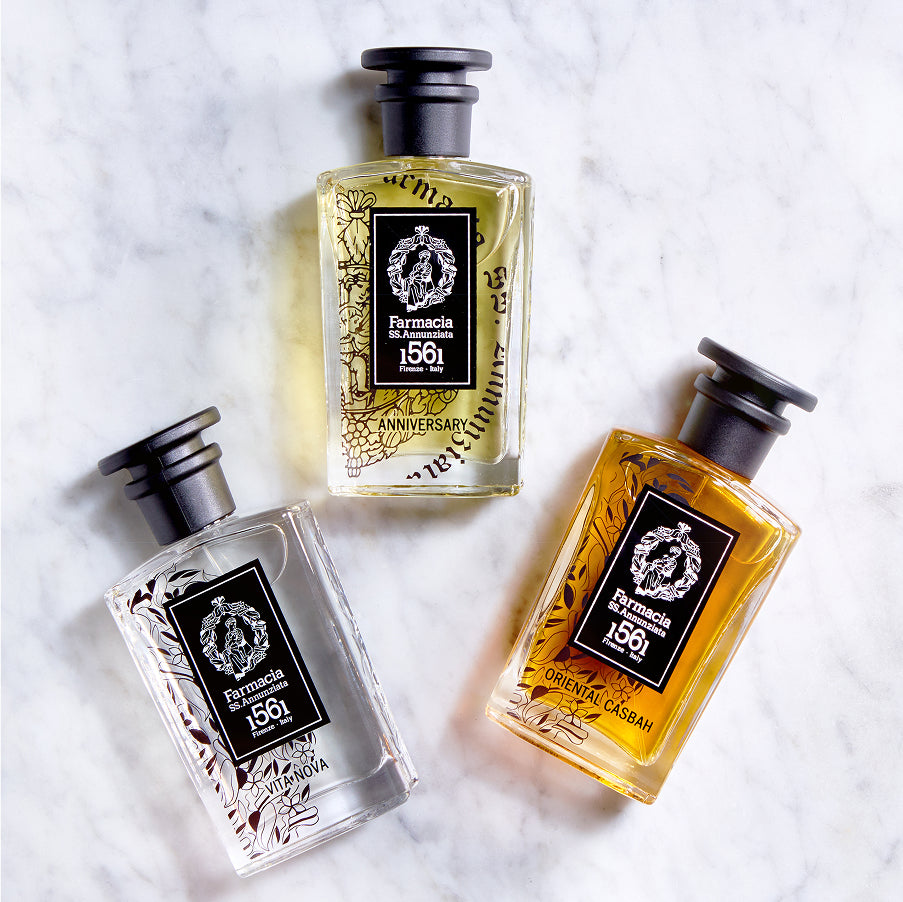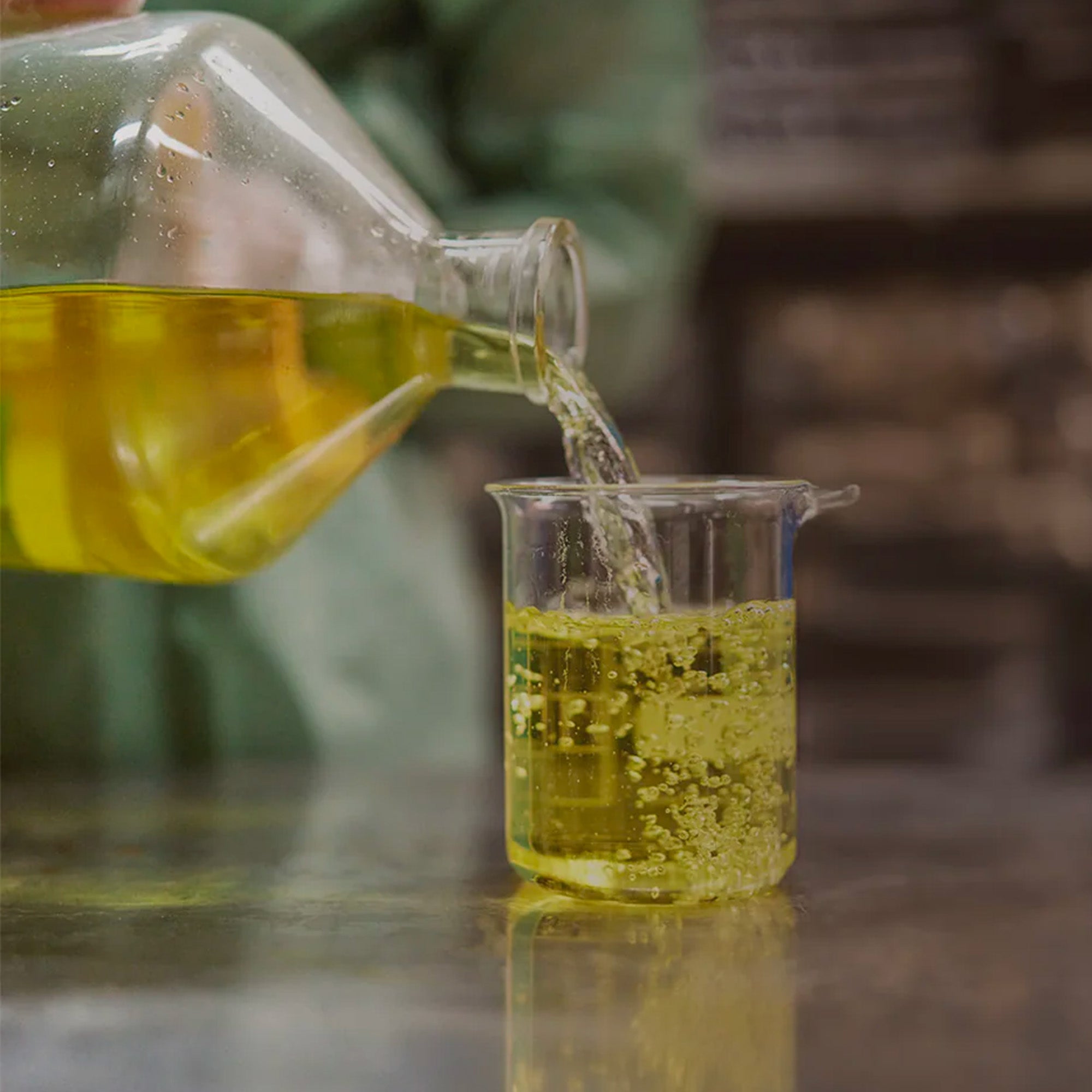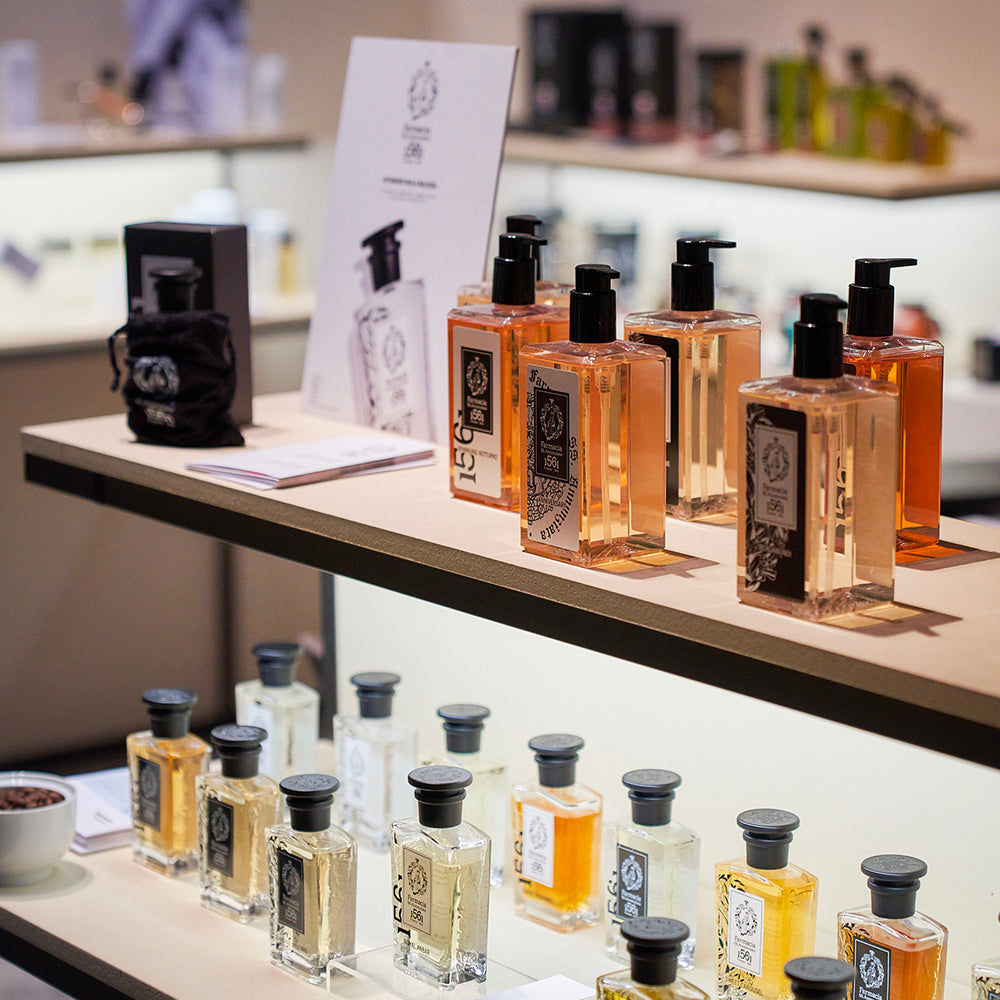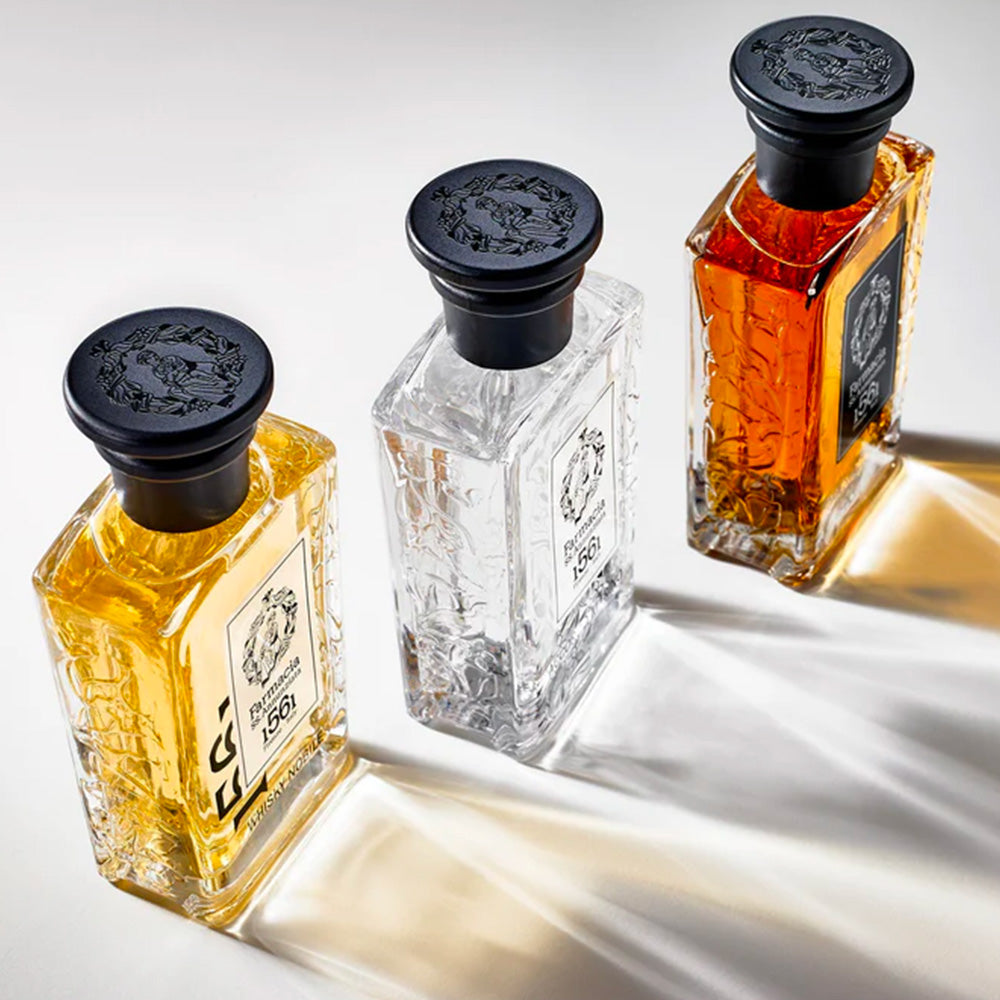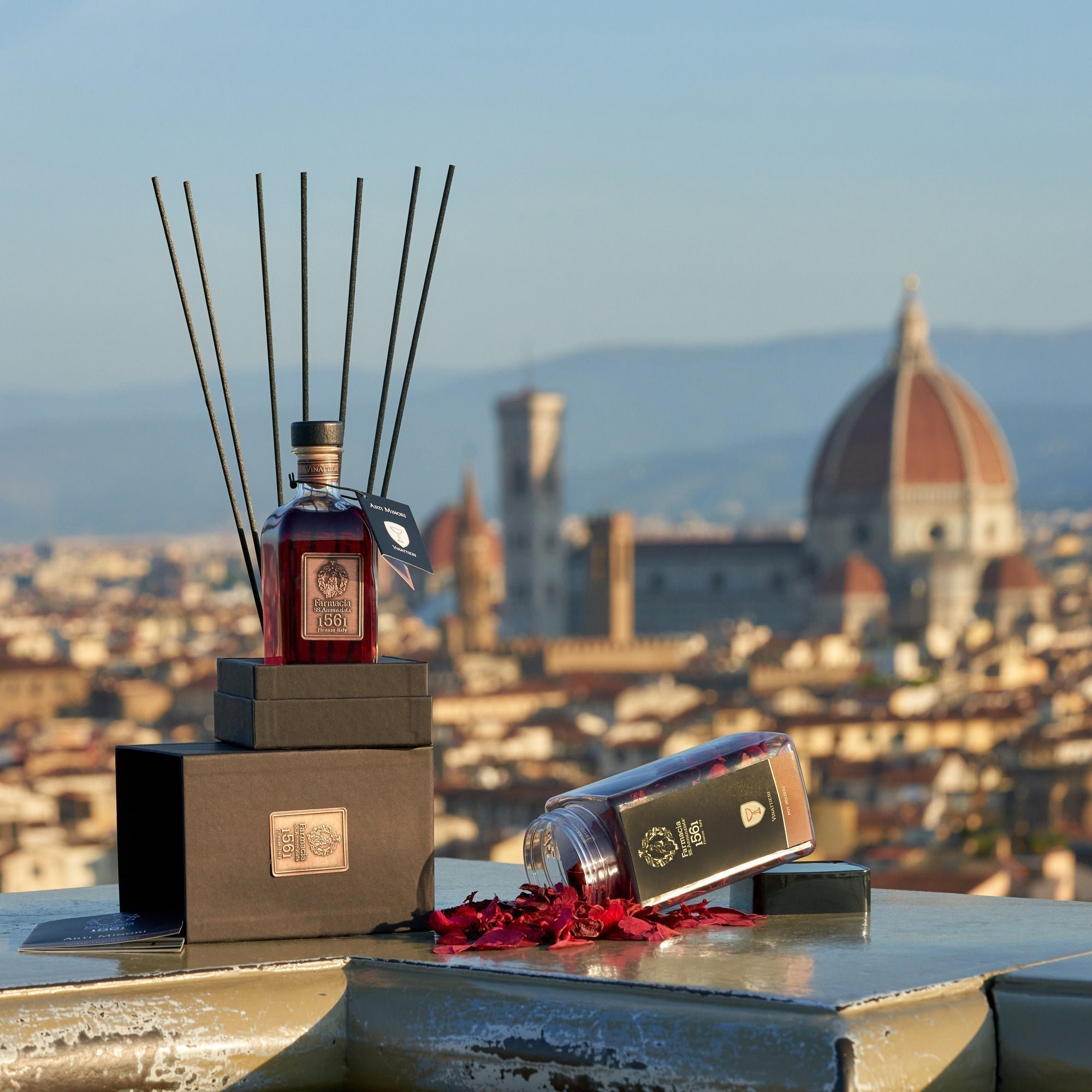
A JOURNEY INTO BEAUTY
THE FSSA 1561 BLOG
_
Written by: Elena Azzerlini
Noble ingredients of perfumery: the most precious raw materials
We live surrounded by a symphony of colors, sounds, and scents. The richest source of olfactory inspiration is the natural world itself — a living universe that offers emotions, beauty, and precious raw materials.
In perfumery, the true value of rare ingredients lies in their authenticity and their power to evoke unique, unrepeatable sensations. Every essence holds the charm of a story, a place, and an ancient craft. The delicate balance between artisanal tradition and the pursuit of excellence transforms a perfume into a work of art: careful selection of ingredients, attention to detail, and mastery in composition make each fragrance a singular sensory experience.
Among the most captivating raw materials in this olfactory world we can find:
- Oud – mysterious and deep
- Iris – elegant and powdery
- Ambergris – warm and sensual
- Rosa Centifolia – delicate and enveloping
These four icons of excellence embody the very soul of haute perfumery: timeless symbols of beauty, rarity, and emotion.
Perfumery raw materials: the art of selection
The art of the master perfumer lies in the ability to select raw materials based on their quality and origin. With deep knowledge of extraction methods, production techniques, and composition, the perfumer achieves the perfect balance between different olfactory elements.
In perfumery, fragrance notes are generally divided into two main categories, depending on how they are obtained: natural and synthetic.
- Natural notes are essences extracted directly from nature, from flowers, leaves, woods, and, in the past, even from animal sources. They belong to iconic olfactory families such as floral, woody, and citrus, and are prized for the authenticity and richness of their aromatic profiles.
- Synthetic notes, on the other hand, are molecules created in the laboratory. Emerging in the early 20th century, they revolutionized the art of perfumery by making it possible to recreate scents that cannot be extracted naturally, like the smell of the sea or metal.
Beyond replicating nature, synthetic molecules have opened entirely new creative horizons. They can enhance, soften, or link different notes, giving fragrances greater balance, depth, and longevity.
Perfume ingredients: between nature and innovation
In the creative process of a niche fragrance, achieving the right balance between natural ingredients and synthetic molecules is essential. It is the delicate interplay between the two that gives life to a successful composition — one that meets every performance requirement while awakening emotion and imagination.
Natural raw materials bring authenticity and depth to a perfume. The freshness, roundness, and juiciness of a natural essence faithfully capture the scent of nature itself — a realism that depends on the quality of the source ingredient. Here, the source plays a key role: climate, geography, and soil all influence the olfactory nuances.
Lavender from Provence, for example, reveals fresher, more aromatic notes, while Sicilian oranges possess an intense, luminous sweetness that is difficult to find elsewhere.
Yet to transform these qualities into a fragrance that is both harmonious and long-lasting on the skin, the perfumer turns to synthetic notes. These molecules help modulate intensity, connect different accords, and enhance longevity, creating a perfect balance between the truth of nature and the artistry of olfactory design.
Beyond their technical role as fixatives, synthetic ingredients offer invaluable advantages:
- They allow perfumers to reproduce aromas once sourced from nature, helping protect ecosystems and animal species.
- They expand creative possibilities, enabling the recreation of scents that cannot be naturally extracted — such as ozonic notes or accords that amplify the natural scent of skin.
When blended with natural essences, these innovative components open endless creative possibilities, giving rise to fragrances that are unique, expressive, and capable of stirring powerful emotions.
Oud perfume: the king of oriental essences
Among the most talked-about and coveted raw materials in the world of niche perfumery, oud undoubtedly reigns supreme.
But what exactly is oud?
Oud is a precious resin produced by the Aquilaria tree, native to Southeast Asia. It forms as a natural immune response when the tree is infected by a specific fungus. The essential oil — one of the most valuable substances in perfumery — is obtained through steam distillation of the infected wood.
Each piece of bark is carefully examined and graded according to its resin content, which determines the final quality of the oud. The process is long, delicate, and extremely costly — so much so that oud is often said to be worth more than gold.
Today, to reduce environmental impact, many producers rely on sustainable plantations and controlled inoculation techniques, allowing the resin to be harvested without cutting down wild trees — an ethical approach that preserves both nature and tradition.
The Meaning of Oud in Perfumery
The scent of oud is deep, woody, and ambery, enriched with animalic and balsamic nuances that evoke a sense of mysticism and sacredness. In Eastern cultures — particularly in the Arab world and in India, oud has long been associated with spirituality, meditation, and devotion. It is often burned during religious rituals, symbolizing a bridge between our world and the divine.
In the olfactory pyramid, oud is typically used as a base note, giving the fragrance warmth, depth, and sensual resinous undertones. These qualities make it an essential ingredient in oriental and ambery compositions, characterized by their enveloping, mysterious allure.
In Western perfumery, oud is interpreted as a symbol of luxury and mystery, the hallmark of niche creations with captivating, unforgettable trails. Depending on its type and method of distillation, it can reveal aromatic, smoky, balsamic, sweet, or even floral facets.
The Cambodian oud featured in our Extrait de Parfum Al Rihla, for instance, reveals an earthy heart and gentle sweet nuances that blend beautifully with other base notes such as honey and date, creating a rich, sensual harmony that tells the story of an inner journey.

Iris perfume: elegance and poetic refinement
Among the most noble and refined ingredients in the art of perfumery, iris holds a place of true distinction. Interestingly, it is not the flower that releases its fragrance, but the root, known as orris. After a long and meticulous process of drying and aging, the orris root develops its unmistakable aroma.
The scent of orris is powdery, velvety, and sophisticated. Its trail is subtle yet persistent — the perfect balance between elegance and restraint. For this reason, iris has long been associated with authentic luxury: the kind that doesn’t seek attention, but reveals itself gracefully.
Often used as a heart note, iris lends a fragrance timeless elegance and quiet magnetism, enveloping it in a refined, poetic aura.
In our Giardino dell’Iris, this noble essence intertwines with myrrh and amber, taking on exquisitely oriental nuances that enhance its depth and mystique — a tribute to beauty expressed through harmony and grace.

Ambergris perfume: the mystery of the ocean
Ambergris is one of perfumery’s most precious and storied raw materials. In nature, it originates from the bile secretion of the sperm whale, which, once expelled, drifts across the ocean carried by marine currents and eventually washes ashore — particularly along the coasts touched by the Indian Ocean.
In the past, its rarity and value made it the object of intense and often indiscriminate hunting. Today, however, ambergris is ethically reproduced in laboratories, ensuring full respect for the environment and marine life.
Ambergris is an extraordinarily fragrant substance, complex and captivating in character. Its scent reveals woody, animalic, and leathery nuances, which lend warmth, depth, and exceptional longevity to any composition. Once prized as an aphrodisiac, a medicinal remedy, and valued even above gold, it remains one of the most noble ingredients in the world of perfumery, a symbol of elegance, mystery, and natural sensuality.
Within our Fragranze1561 collection, Royal Anbar offers a soft and enveloping interpretation of ambergris, enriched with delicate powdery undertones. The freshness of cedar intertwines with spicy and aromatic notes of cinnamon and everlasting flower, creating a fragrance that is intricate yet perfectly balanced, a scent that accompanies the wearer with timeless grace, never overwhelming, always alluring.
Centifolia rose perfume: the queen of flowers
A precious ingredient and timeless symbol of femininity and passion, Centifolia rose reveals an intense, creamy fragrance, enriched with sweet undertones and delicate spicy nuances. Soft and enveloping, its scent radiates warmth and sophistication — the pure expression of romantic, refined femininity.
The story of Centifolia rose dates back to the 17th century, when it was first cultivated in the Netherlands as a hybrid between two rose varieties. Its cultivation later flourished in France, particularly in Grasse, the cradle of fine perfumery, where the most fragrant blossoms were carefully selected. Over the centuries, its reputation and prestige have made it one of the most iconic and beloved essences in European olfactory tradition.
A symbol of elegance and refinement, Centifolia rose is used not only in perfumery, but also in cosmetic and botanical preparations, as in our Rose Toner.
Thanks to its soothing, antioxidant, and refreshing properties, Centifolia rose, when combined with fermented matcha tea leaves, transforms the toner into an essential step of any skincare ritual.
The Rose Toner nourishes and protects the skin, enhancing its elasticity and radiance while providing an immediate sensation of freshness and well-being. The delicate harmony of rose and matcha helps counteract the signs of stress, leaving the skin luminous, revitalized, and gently scented.

Conclusion: the sensory journey of noble perfume ingredients
The most precious raw materials are those that give a fragrance its deepest, most authentic character. In particular, oud, iris, ambergris, and Rosa Centifolia are not merely prized ingredients, they are cultural and historical symbols. Each carries the weight of tradition, the essence of specific places, and echoes of memories, creating a universe of meaning that bridges distant eras with contemporary sensibilities.
The true significance of a fragrance goes far beyond the simple act of applying perfume. By stimulating the areas of the brain linked to memory and emotion, scents become keepers of experiences and recollections.
It is the careful, conscious selection of raw materials that transforms a fragrance into a timeless work of art, one that moves us, inspires us, and reminds us of what it means to feel alive.


